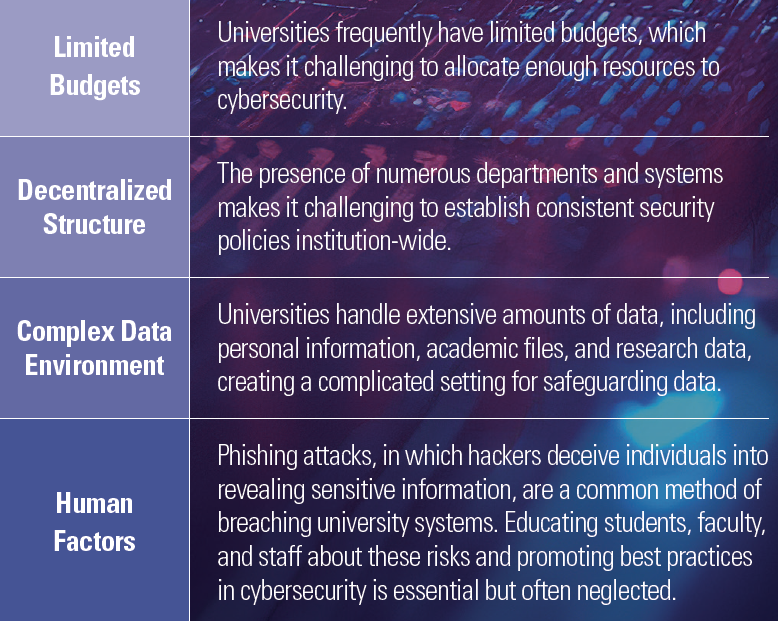As universities increasingly rely on digital platforms for academic and administrative functions, protecting student data has become a critical concern. While digitalization enhances accessibility and efficiency, it also exposes educational institutions to cyberattacks. The recent data breach at Jeonbuk National University (JBNU) in South Korea highlights these dangers and underscores the need for stronger data security measures. This article examines the JBNU breach, the rise of cyberattacks on universities, and the challenges of safeguarding student data, along with strategies to mitigate these risks.
The Jeonbuk National University Data Breach
JBNU, in North Jeolla Province, experienced a major cyberattack on July 28th, 2024, leading to the theft of identification data from 322,425 students and graduates. The breach compromised of the university’s integrated information system, which is for managing academic affairs, through three waves of attacks. Sensitive data, including names, resident registration numbers, phone numbers, email addresses, parents’ names, and academic records, was stolen. Police Agency (JBPP) to investigate the incident. In a public apology posted on its website, JBNU acknowledged the severity of the breach and confirmed that the attack resulted in data leaks on three separate occasions. The university has since implemented measures to address the vulnerabilities that facilitated the breach and has vowed to prevent similar incidents in the future. Despite these efforts, the breach has left a lasting impact on the institution’s reputation and has raised concerns among students, faculty, and the broader community.

The Growing Threat of Cyberattacks on Universities
The JBNU incident is part of a broader trend of increasing cyberattacks on educational institutions worldwide. Similarly, Western Sydney University has notified over 7,500 students of a cyber breach affecting its IT network. The unauthorized access, traced back to May 2023 via Microsoft Office 365, was discovered in January 2024. SharePoint files, emails, and possibly the Solar Car Laboratory were compromised, though no related threats have been reported. Cybercriminals find universities appealing targets because they store large amounts of important data like personal identification information, financial records, and intellectual property, making them more vulnerable. Transitioning to online learning during the coronavirus disease 2019 crisis increased these dangers since schools quickly implemented new technology and grew their digital systems without properly addressing security vulnerabilities. Cyber assaults targeting universities can result in severe outcomes. Apart from the instant financial and reputational harm, breaches can weaken trust between institutions and their stakeholders, especially students and their families. Additionally, universities could face legal consequences if found to have failed in their duty to protect personal information under laws like the General Data Protection Regulation in Europe or equivalent regulations elsewhere.
Challenges in Protecting Student Data


Measures to Enhance Data Protection in Universities
Regular audits and vulnerability assessments should be conducted to identify and rectify weaknesses in the institution’s digital infrastructure. Universities should also develop comprehensive data governance policies that clearly define how data is collected, stored, accessed, and shared. These policies should be aligned with legal requirements and best practices in data protection. Additionally, institutions should limit access to sensitive data to only those individuals who need it for their work, reducing the risk of internal breaches. Training and awareness programs are critical components of a robust cybersecurity strategy. Universities must ensure that all members of the community, including students, faculty, and staff, are educated about the importance of data security and are equipped with the knowledge to recognize and respond to potential threats, such as phishing attempts. Regular updates and reminders can help maintain a high level of awareness and vigilance. Collaboration with external partners, including cybersecurity firms and governmental agencies, can also enhance a university’s ability to protect its data. These partnerships can provide access to cutting-edge technologies, threat intelligence, and incident response support, enabling universities to respond more effectively to cyber threats. Lastly, universities should have a well-defined incident response plan in place to manage data breaches and other security incidents. This plan should outline the steps to be taken in the event of a breach, including communication with affected individuals, coordination with law enforcement, and measures to mitigate the damage and prevent future incidents.
As universities continue to navigate the digital landscape, the protection of student information must be a top priority. The recent data breach at JBNU highlights the vulnerabilities in the educational sector and the potential consequences of insufficient data protection measures. Universities can enhance the protection of sensitive information and maintain trust by investing in advanced cybersecurity infrastructure, implementing thorough data governance policies, and promoting a culture of awareness and vigilance.
